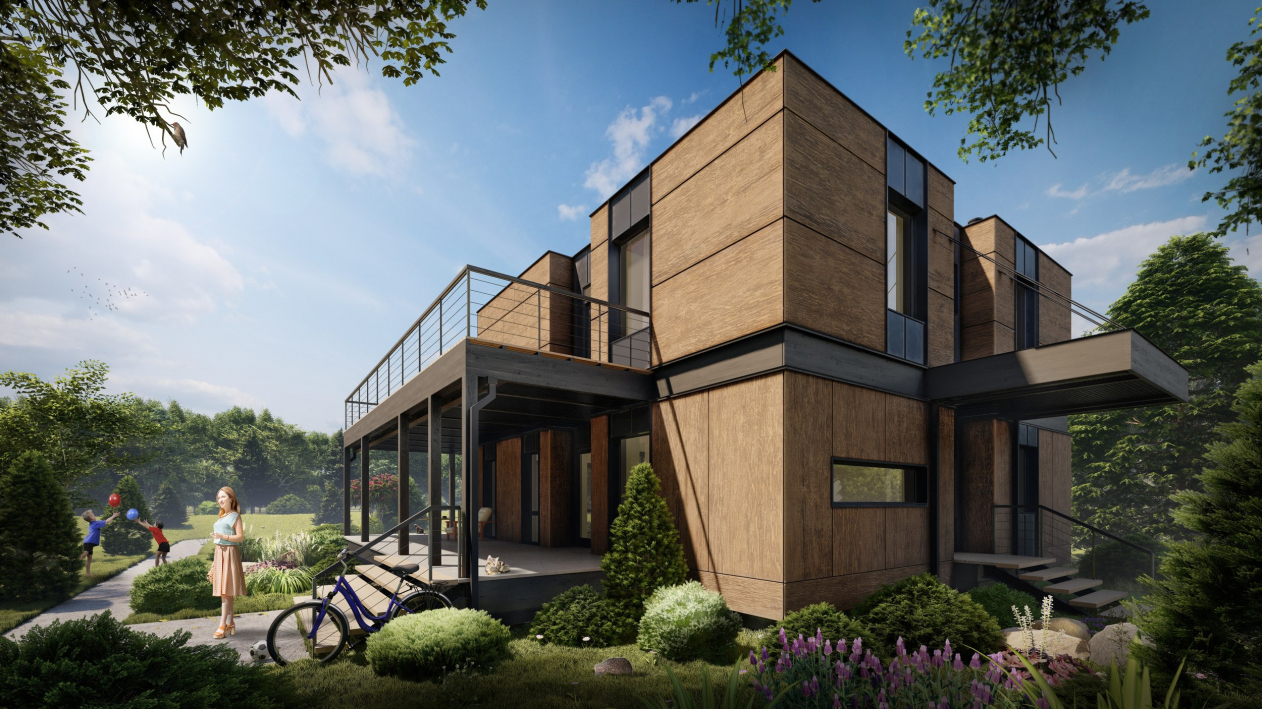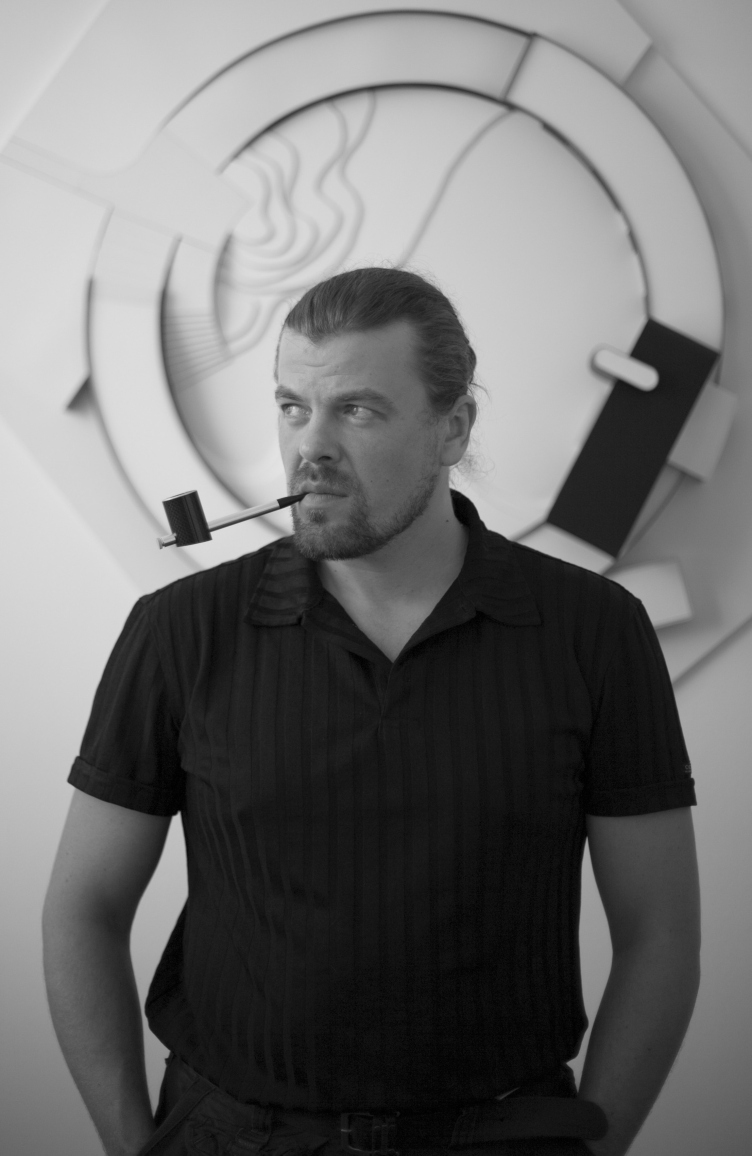Previous to that, a competition of land site owners was announced, as well as a competition of young architects. The entrance conditions for the owners were the attractive views that the site commands, but, more importantly, the owner’s consent to public exposure of the design process. As for the young architects, to assess the level of their competence, they were offered a test project. Out of the pool of applications submitted by land owners, Roman Leonidov selected three finalists: from Kiev, from the Urals, and from an old dacha settlement near Moscow. Out of young architects, three architects reached the final: Pavel and Veronica from Moscow and Alexander from Ekaterinburg.
During an exciting live streaming session, the final round of the competition took place, the winner being chosen by the audience. Roman Leonidov introduced the contestants and shared about the land sites, while the young architects made a three-minute motivational speech. There was also a curious challenge for the young architects that Roman Leonidov came up with. He asked them questions as if coming from the client, and the applicants had to give quick answers because silence or hesitation on the part of the architect in such a dialogue spells losing the client – the maestro warned. Most of the audience’s votes went to the architect Alexander Chechulin who broadcast empathy and a positive attitude. The less eloquent contestants scored second and third places respectively. The competition of land owners was won by the Urals resident. Later on, however, it turned out that he was not ready for extensive public exposure, and the game was joined by Andrey, the land owner from Kiev, who scored second place.
The stream. Selecting the participants of the project
By the moment of our interview with Roman Leonidov the work on the house near Kiev already began, and two videos were posted demonstrating meetings with the client and work on the project. Here you can watch the first meeting with the architect.
These videos are very interesting because the viewers not only see the faces and read the comments but at the same time see the drafts by the young architect, which Roman Leonidov corrects in front of our eyes with magic markers, explaining his corrections.
Meeting with the architect #2
As for me, I learned a whole lot of useful information about designing a country residence from these two videos alone. Strictly speaking, this format even seemed overly generous to me. I am not sure whether it will lead to more frequent invitations for the architects to design a country residence but it will surely raise the levels of architects’ competence, land owners’ culture, and the aesthetic value of a country residence in Russia.
Roman Leonidov about his “Build YOUR House” project
Roman Leonidov
Copyright: © provided by Roman Leonidov
You are an established architect, and you have achieved a lot. One could think that you could rest on your laurels. Why this new format?
The main goal is educational. After I conduct one or two such projects on my YouTube channel, I will be able to refer young architects, who come to work for my company, to these videos instead of having to explain the same things to them over and over again. The second goal is responding to the challenge of the audience of my YouTube channel, who say that “big” architects do not work with simple people. Yes, we do. And the third goal is – this is how I find new employees for my company.
You anticipated my next question. During the last stream, the online audience was to choose one architect out of three finalists. And what will happen to those who don’t get picked?
Out of those who reached the finals, not everyone becomes a winner, but, since moving towards the finals, they already passed rigorous screening, they come to work for my company. This way, I kill two birds with one stone. It’s understood that I spend a whole lot of time on this: this is a real project with a real client and a young architect, whom you also have to educate. Every week, we conduct meetings, do real work, and then, based on the results, shoot a video a post it to our YouTube channel.
Does the client pay for the project?
No, for the client this is free of charge. This is why I try to raise some funds on the channel and look for information support.
Why did you choose this particular format of critical analysis of the work of the young architect?
To a certain extent, just to please the public. I noticed that once you throw in some kind of scandalous thing, for example, pan someone’s project, the number of views just spikes. However, if you analyze some award-winning projects in a positive way, nobody watches it. This is why I came up with a form where a could unite some “negativity” (in this case, at the expense of the young architect, whose project is mercilessly panned, but the architect knows in advance what he’s signing up for, and he is eager to learn) and positive vibes – because ultimately it will be yet another masterpiece that my company will create.
Where did you get your coaching skills? Do you have a natural talent?
No, I developed them with practice. If you take on at least one assistant, you automatically turn into a teacher. I deliberately avoid getting ready for my streams, but improvise, responding to the immediate circumstances.
You started your project from a stream where you introduced the contestants, chose the architect and the land owner, and the questions from the audience. Was it hard to be the anchor of the stream?
Actually, no! It was a lot easier than shooting a video and then editing it. When I lead a stream, I always control the situation, but when there are three of us in a conference, this is a lot harder. But there won’t be long streams anymore. I will just film our conferences and then upload a video that is the essence of working on the project.
This format seems to be pretty time and labor consuming!
Yes, but I get a theme for my work for years ahead. Currently, for the Kiev land site, we are doing a set of sketches, then there will be a working project, and then construction will begin. And when the construction is complete, we will get a documentary. My daughter is a talented documentary director, she sure will piece something together.
Aren’t you afraid of disclosing your personal secrets? Because you share with the whole world the process of designing your house!
No, not at all. The human brain is so wired that it cannot copy what I’m doing.
But still, this probably means a lot of work: design, education of a young colleague, communication with the client, and thinking about the audience on top of all that. There is a common saying that actors lose up to 5 kilos a night.
Precisely! Holding the attention of your audience and designing things is incredibly hard. But I enjoy it immensely. The audience is growing. I also keep on making videos from the author supervision of my projects that are in construction, which are also available on my channel.
The playlist of the “Build YOUR House” project



































